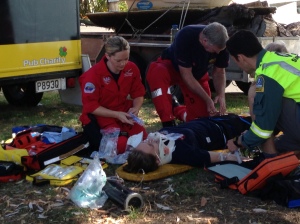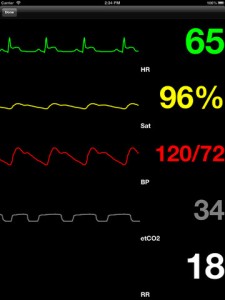Click HERE for the scenario library
With the recent acquisition of 3 new mannequins (adult, child, and infant) ARHT and Auckland HEMS have greater opportunities to perform in-situ simulation, i.e. simulated clinical scenarios that occur in varied and often challenging environments.
In situ simulation is used by multiple pre-hospital services, and is well-described in this paper by the London HEMS group. Although the mannequins themselves are low fidelity, the aim of their simulation process is to generate ‘psychological and environmental fidelity’. London HEMS describe multiple benefits of simulation with including rapid familiarisation with equipment and medical packs, practice of critical skills, development of CRM and teamwork skills, practice of unusual or difficult scenarios, and simulation of rare events such as equipment failure or failed airways.
The purpose of this section of the site is to act as an online repository of simulation scenarios, which will be regularly expanded with the aim of building a useful clinical resource.
We have elected to write scenarios within a single-page simulation template. This maintains efficiency and clarity of purpose, and allows effective delivery of a simulation scenario from an iPhone or similar (possession of an iPhone seems to be a mandatory requirement for medical registration in New Zealand these days!). Embedded within some of the scenarios are links to images relevant to the scenario, for example ECGs and ultrasound images.
Similarly, a debrief checklist is available in a single page form to act as a template for a structured debrief. This is adapted from the London HEMS debrief template.
At this point we are not providing a ‘model answer’ for each simulation – in the prehospital setting there are often multiple potentially appropriate courses of action, and this is particularly true for our service given that for 14 hours per day the helicopter is staffed by a (usually) non RSI paramedic/medically trained crewman instead of the daytime doctor/paramedic/crewman model.
However, COMMENTS AND DISCUSSION AROUND THESE SCENARIOS WOULD BE GREATLY APPRECIATED – either from our team members who have completed the scenario, or anyone else who wishes to share their thoughts. The internet is an immensely powerful tool for sharing clinical experience. Please use the comments box at the bottom of each scenario page to submit any thoughts you wish.
Instructions for simulation scenario execution:
1) choose a scenario facilitator (doctor, number 1 paramedic, number 2 paramedic)
2) facilitator sets up a mannequin in a suitable location as per the scenario, as well as any other props that are needed; check that training pack contains additional equipment
3) the simulation team can be provided with clinical information as in the template.
For a primary prehospital mission, this could consist of a one to two sentence summary to represent the sort of information provided by the dispatcher (for example “MVA at Paeroa, elderly male patient entrapped, head injury, GCS 5). The team could then be allowed several minutes of discussion to simulate the sort of planning that would occur in flight to the scene.
More clinical information from the template could then be presented as if it were a handover from an on scene ambulance crew, or presented as the team perform an assessment
4) During the scenario itself – both the facilitator and the team members should attempt to make events and actions as realistic as possible, within the constraints of practice equipment (IV lines placed, drugs drawn up, monitoring equipment on etc). The scenario facilitator can provide information as the scenario progresses, preferably without the team having to ask (“breath sounds are equal”, “BP is 80/40”, “BSL is 2.4” etc)
The facilitator must monitor the progress of the scenario to ensure that the learning aims are being met – if not additional elements may need to be introduced (complications etc!)
THE AIM IS TO KEEP THE TEAM IN “THE ZONE” – described by the London HEMS group as a “psychological state of simulated realism and immersion”.
5) After the termination of the scenario a structured debrief occurs to cover both technical and non-technical skills. The debrief should include feedback to the facilitator about their running of the scenario and suggestions for future scenario execution.
ARHT has iSimulate equipment which is not yet fully operational; in the interim a simple app like SimMon can add extra fidelity.
Click HERE for the scenario library
Please note – these scenarios are free for anyone to use and adapt as they wish. At Auckland HEMS we are firm believers in FOAM (Free-Open-Access-Meducation).
Please consider crediting us or providing a link to our site though – and good luck!



Pingback: Review - Auckland HEMS app - KI Doc